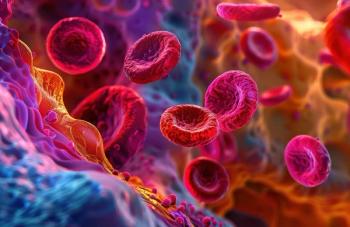
Telemedicine Shows Promise for Migraine Treatment, Access
Using telemedicine for migraine treatment could improve physician productivity as well as patient access, according to an abstract presented at the 2019 American Headache Society Annual Meeting.
Using telemedicine for migraine treatment could improve physician productivity as well as patient access, according to an abstract presented at the 2019 American Headache Society Annual Meeting, held July 11-14 in Philadelphia.
The researcher studied follow-up care using telemedicine over a 1-year period for patients with severe headache disability from migraine treated in a specialty care center. The study sought to determine the feasibility of telemedicine and to see if patient outcomes and satisfaction were noninferior to those seen with face-to-face visits.
Patients who had an initial visit between September 2014 and June 2015 and met the diagnostic criteria for migraine were invited to participate. Participants were randomized (1:1) to receive their follow-up care either by telemedicine or through in-office visits. Follow-up visits were scheduled at 4 to 6 weeks and then at 3, 6, 9, and 12 months. All visits were conducted by a single headache medicine specialist using a similar video format; patients completed online questionnaires before and after each visit.
The electronic health record was used to review if the patient contacted the office, made extra visits, or had procedures and hospitalizations. The primary outcome was the percentage of completed, scheduled telemedicine visits. Secondary outcome measures included headache disability (MIDAS), visit time, and perceptions of telemedicine using a questionnaire. Willing participants were interviewed after the final visit by telephone.
Fifty patients were screened and 45 joined the study (43 women, 2 men). Of 96 scheduled telemedicine visits, most (89) were successfully completed (87% vs 93%; 95% CI, 0.61-6.17; P = .3).
More patients in the telemedicine group (18/22) participants completed the study than in the in-office visit group (12/23).
Clinical outcomes, including improvement in MIDAS from baseline to 1 year (95% CI, —32.8 to 24.3; P = .76), improvement in number of headache days at 1 year (95% CI, —26.8 to 6.67; P = .22), and average improvement in headache severity at 1 year (95% CI, —1.72 to 1.66; P = .97) in the telemedicine group were noninferior to the in-office group.
Patients using telemedicine rated convenience higher than those patients in the in-office visit group; visit times were also shorter in the telemedicine group.
Reference
Friedman D. A randomized trial of telemedicine for migraine management category: late breaking abstract—oral presentation submission category: clinical studies. Presented at: 2019 American Headache Society Annual Meeting; July 11-14, 2019; Philadelphia, PA. Abstract 679616.
Newsletter
Stay ahead of policy, cost, and value—subscribe to AJMC for expert insights at the intersection of clinical care and health economics.












































